Buying Guide for the Best Folding Mini Trampoline
Choosing the right folding mini-trampoline can be a great addition to your fitness routine, providing a fun and effective way to exercise. When selecting a mini-trampoline, it's important to consider several key specifications to ensure you get the best fit for your needs. These specifications will help you determine the durability, safety, and overall performance of the trampoline. By understanding these factors, you can make an informed decision and enjoy a safe and effective workout experience.Weight CapacityWeight capacity refers to the maximum weight that the trampoline can safely support. This is important because exceeding the weight limit can compromise the trampoline's structural integrity and lead to accidents. Weight capacities typically range from 200 to 400 pounds. If you plan to use the trampoline for high-intensity workouts or if multiple people will be using it, opt for a higher weight capacity to ensure safety and durability.
Frame MaterialThe frame material determines the trampoline's strength and longevity. Common materials include steel and aluminum. Steel frames are known for their durability and sturdiness, making them ideal for frequent use and higher weight capacities. Aluminum frames are lighter and more portable but may not be as durable as steel. Choose a frame material based on how often you plan to use the trampoline and whether you need to move it frequently.
Mat QualityThe mat is the surface you jump on, and its quality affects the trampoline's performance and comfort. High-quality mats are made from durable, UV-resistant materials that can withstand regular use without stretching or tearing. Look for mats with reinforced stitching and a non-slip surface for added safety. If you plan to use the trampoline outdoors, ensure the mat is weather-resistant to prevent damage from the elements.
Spring SystemThe spring system determines the trampoline's bounce and shock absorption. There are two main types: metal springs and bungee cords. Metal springs provide a firmer, more responsive bounce, which is ideal for high-intensity workouts. Bungee cords offer a softer, quieter bounce and are gentler on the joints, making them suitable for low-impact exercises. Consider your workout intensity and joint health when choosing the spring system.
Size and PortabilityThe size of the mini-trampoline affects its portability and the space it requires. Most mini-trampolines have a diameter of 36 to 48 inches. Smaller trampolines are easier to store and transport, making them ideal for limited spaces or on-the-go use. Larger trampolines provide more jumping area and stability, which can enhance your workout experience. Consider where you will use and store the trampoline to determine the best size for your needs.
Safety FeaturesSafety features are crucial to prevent injuries during use. Look for trampolines with padded frames and springs to reduce the risk of impact injuries. Some models also include safety bars or handles for added stability, which can be especially helpful for beginners or those with balance issues. Ensure the trampoline has a non-slip surface and sturdy legs to prevent tipping. Prioritize safety features based on your experience level and any specific safety concerns.
Ease of AssemblyEase of assembly refers to how simple it is to set up and take down the trampoline. Some models come pre-assembled, while others require more complex assembly. Look for trampolines with clear instructions and minimal tools required for setup. If you plan to move or store the trampoline frequently, choose a model that folds easily and has a compact design. Consider your comfort level with assembly and how often you will need to set up or take down the trampoline.

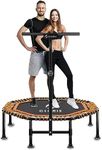

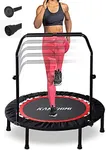
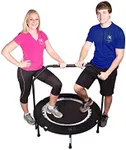
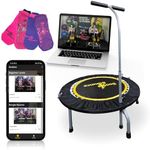
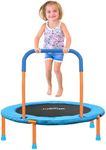
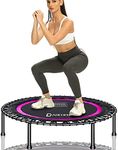
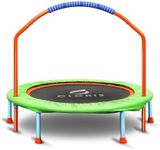
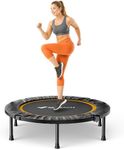


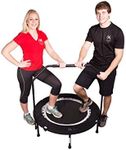
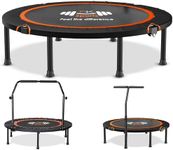
![DARCHEN 150KG Rebounder Mini Trampoline for Adult, Indoor Small Trampoline for Exercise Workout Fitness, Upgrade Design Bungee Trampoline for Safer Quieter Bounce [100 CM]](https://images-proxy.bestreviews.guide/W-TiytSnwAC3Iil-1gWGahiVuAg=/0x150/https://m.media-amazon.com/images/I/31-GRvF2JxL._AC_CX679_.jpg)

